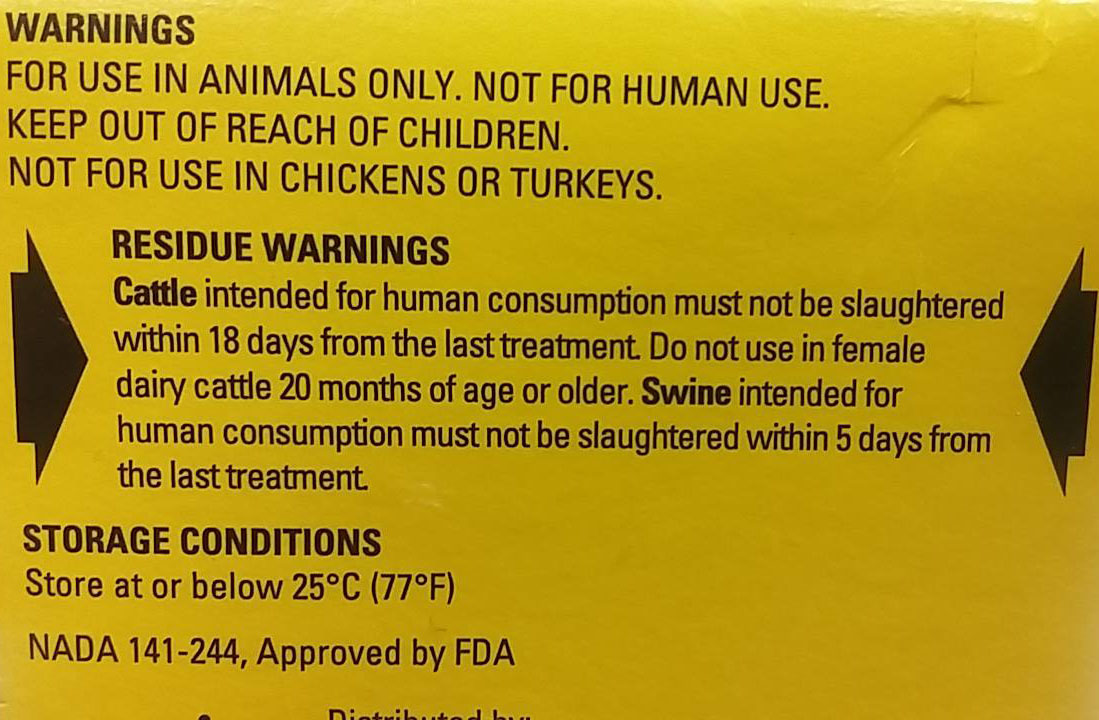Farm & Ranch
Read the Label – Withdrawal Time

By Jessica Crabtree and Dr. Jered Harlan, DVM
While the topic of antibiotic use in animals for consumption leaves people questioning its relevance, veterinarians are working to bridge that gap of understanding. Veterinarians such as Dr. Jered Harlan want producers to administer such medication properly and be educated about the substance so they are able to answer consumers when questions arise.
The United States Food and Drug Administration (FDA) has made it their mission to ensure that all antibiotics used are done so in the most cautious way. Now that the Veterinary Feed Directive (VFD) has been put in place since Jan. 1 of this year, changes have been established such as elimination of the growth promotion use of human medically important antibiotics and expanding the list of feed-grade antibiotics classified as VFD drugs.
Plainly put, the majority of feed-grade antibiotics used in or on animal feeds that have been available to producers over the counter without the approval of a vet will now be subject to VFD drug guidelines.
Therefore, VFD rules allow producers and vets the opportunity to work closely together for the purpose of maintaining the animals’ optimal health. For years producers have been educated on proper methods of antibiotic use and have been held to compliance. The Beef Quality Assurance (BQA) program has been training beef producers about the safe and appropriate use of antibiotics since the 1980s.
To read more pick up a copy of the March 2017 NTFR issue.
Farm & Ranch
Hazards of Backyard Poultry

By Barry Whitworth, DVM
Having backyard poultry is a popular agriculture enterprise. According to the United States Department of Agriculture, 0.8 percent of all households in the United States have chickens. People keep chickens for a variety of reasons with table eggs being one of the more common reasons.
Unfortunately, some of these poultry producers are not aware of the hazards that come with keeping poultry because many times they carry pathogens but appear healthy.
Chickens are carriers of several zoonotic diseases. These are diseases that can be passed from animals to humans. According to a recent survey in Pennsylvania, a majority of backyard poultry producers were aware of the dangers of avian influenza. However, this study also revealed that far fewer producers were aware of the risk of possible exposure to Salmonella and Campylobacter.
The lack of knowledge about the hazards of raising poultry likely contributes to the continued issues of Salmonella outbreaks associated with backyard poultry. In 2023, the Centers for Disease Control and Prevention reported 1,072 illnesses of Salmonella linked to backyard poultry, and 272 of those patients required hospitalization. Oklahoma reported 43 individuals with the disease.
To read more, pick up a copy of the April issue of NTFR magazine. To subscribe by mail, call 940-872-5922.
Farm & Ranch
Ag Elsewhere: Wyoming

By Tressa Lawrence
Babies are tucked away in every nook and cranny. Many ranchers across Wyoming have baby animals popping up all over this time of year.
Farm & Ranch
Ag Elsewhere: Montana

By Lindsey Monk
Another load of grain in to keep feeding the calves until the green grass can really start popping.
-

 Country Lifestyles1 year ago
Country Lifestyles1 year agoScott & Stacey Schumacher: A Growth Mindset
-

 Equine7 months ago
Equine7 months agoThe Will to Win
-

 Country Lifestyles7 years ago
Country Lifestyles7 years agoStyle Your Profile – What your style cowboy hat says about you and new trends in 2017
-

 Country Lifestyles4 years ago
Country Lifestyles4 years agoAmber Crawford, Breakaway Roper
-

 HOME7 years ago
HOME7 years agoGrazing North Texas – Wilman Lovegrass
-

 Country Lifestyles7 years ago
Country Lifestyles7 years agoDecember 2016 Profile, Rusty Riddle – The Riddle Way
-

 Country Lifestyles8 years ago
Country Lifestyles8 years agoJune 2016 Profile – The man behind the mic: Bob Tallman
-

 Outdoor9 years ago
Outdoor9 years agoButtercup or Primrose?






